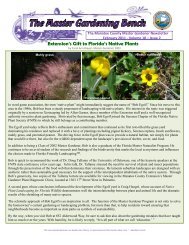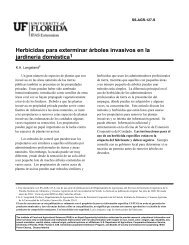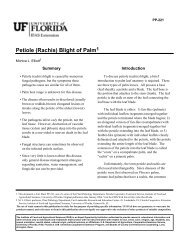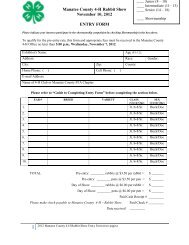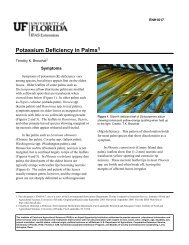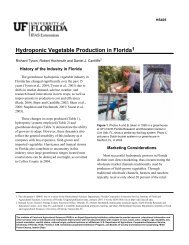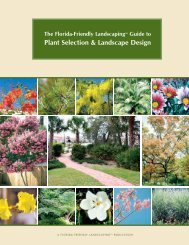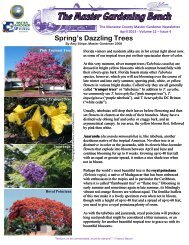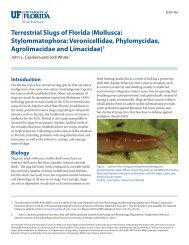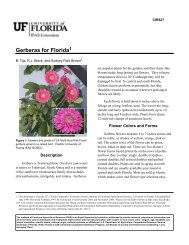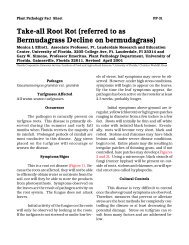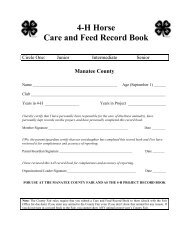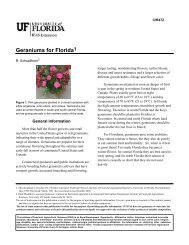Hillsborough County ISTF - Manatee County Extension Office ...
Hillsborough County ISTF - Manatee County Extension Office ...
Hillsborough County ISTF - Manatee County Extension Office ...
- No tags were found...
You also want an ePaper? Increase the reach of your titles
YUMPU automatically turns print PDFs into web optimized ePapers that Google loves.
attachments to ensure adequate coverage. It is importantto remember that when using the foliar method, theherbicide may aerially drift and harm or kill non-targetplants. Be sure to follow instructions on the herbicidelabel.Basal Bark ApplicationsThis technique consists of applying oil-based herbicidesdirectly onto the bark. Herbicides used in this method areformulated to be absorbed through the bark of the tree.Apply herbicide around circumference of the stem/trunkup to 12 to 20 inches above the ground using a handheldspray bottle or pump sprayer. Old or rough bark mayrequire more herbicide than smooth young wood. Spray towet, but not to the point of run-off. Wind drift is less of afactor when basal bark spraying, but still should be aconsideration.Cut-Stump ApplicationsThe cut-stump method is most effective for plants prone toresprouting. After mechanically cutting down the invasiveplant, the herbicide is painted, sprayed or squirted directlyonto the cut surface of the stump or stem on the circumferenceof the exposed cambium. The cambium is the layerjust inside the bark that provides the tree/plant with newcells for growth. For smaller stems, simply coat the cutstem(s). The stump should be cut as level as possible toprevent herbicide run-off, and herbicide should be appliedimmediately following the cut to increase herbicideeffectiveness—i.e. prevent resprouting. Be sure to removethe sawdust from the stumps before treatment. Lowpressureequipment, such as handheld spray bottles, pumpsprayers or even a paintbrush, are appropriate tools for thecut-stump technique.Herbicide Application Tips• Consult your county extension service (see Resourceson page 4) for more detailed information about bestpractices. Using more is not better and can harmdesirable plants.• Always read the product label before use. Before usingany herbicide or chemical, read the label carefully,thoroughly understand all prohibitions and follow alldirections. Remember, the label is the law!• Always wear recommended protective clothing andequipment when handling herbicides.6



